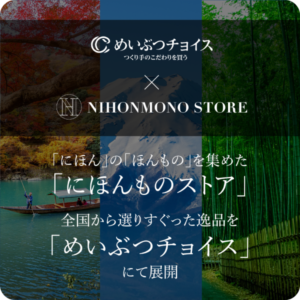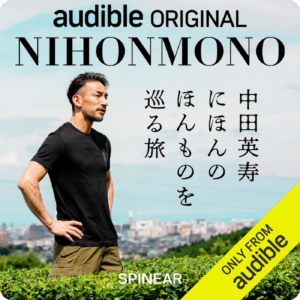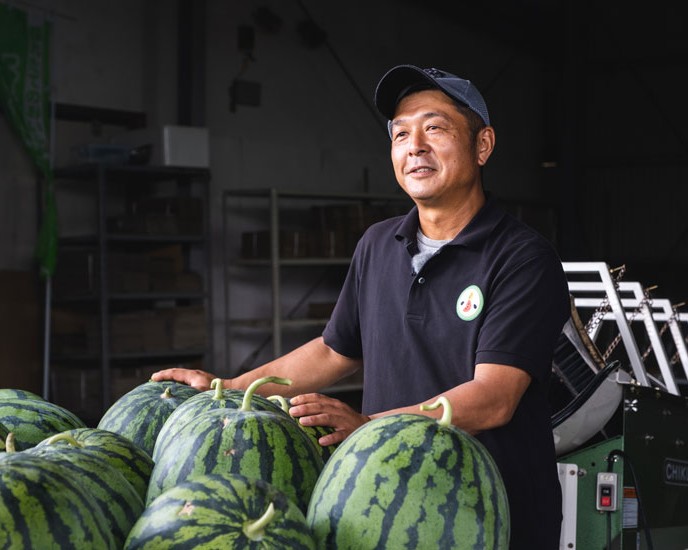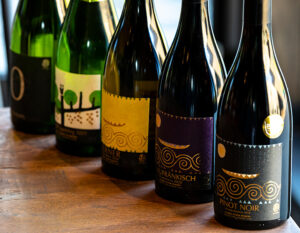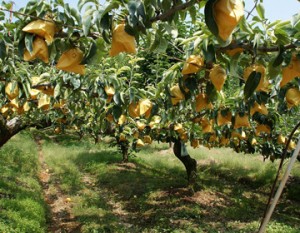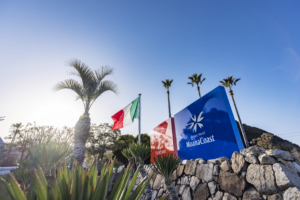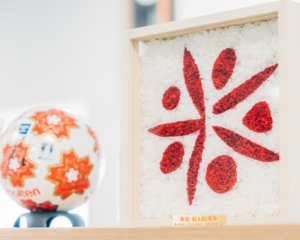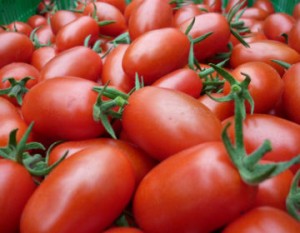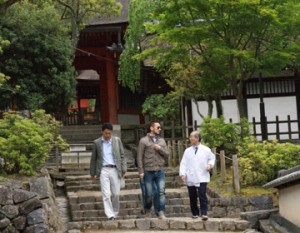Hita City in Oita Prefecture, known as “Suikyo Hita,” is rich in water resources. The large temperature difference unique to the basin and abundant water resources flowing from the surrounding mountains make the area ideal for watermelon cultivation, as well as many other crops. Furiya Shigeishi Farm, which runs a watermelon farm in this area, is dedicated to quality and continues to pursue high sugar content and a crisp texture.
Making me love watermelon, which I don’t like.

Kimiaki Shigeishi runs Furiya Shigeishi Farm in Hita City, Oita Prefecture. He is a hope of watermelon farmers in Hita City, focusing on watermelons with high sugar content and good texture, and in recent years he has been making efforts to grow various varieties of watermelons.
His grandfather had a farm and grew watermelons there, so he was familiar with them, but no matter how many times he tried them, he never found them tasty. Therefore, when he took over the farm, he had no interest in watermelon cultivation and did not even think about trying it.
However, he happened to receive a seedling of watermelon from an acquaintance, and when he tried growing it, it was well received by everyone around him. This made him somewhat happy, and before he knew it, he had fallen in love with watermelon cultivation.
However, when Mr. Shigeishi started growing watermelons, his grandfather had passed away, and he had no idea what he was doing in this field. As an amateur, he was self-taught, reading reference materials and repeating trial-and-error.
Hita City itself is not as well known, shipped as much, or planted as many watermelons as other famous watermelon-producing areas in Japan. Therefore, he began to cultivate watermelons with the desire to deliver “delicious watermelons” and compete on the basis of quality.
Taste consisting of Chinese cabbage, soil and water

Furiya Shigeishi Farm has been growing watermelons for more than 20 years. It has become clear that “backcropping” is important for growing high-quality watermelons with high sugar content. Backcropping” means that after the main crop is harvested, a different crop is grown until the next planting. This process is done to prevent “row crop failure,” in which the same crop is grown continuously, causing the roots to become dense and the leaves and vines to wither. Here, Chinese cabbage is grown as a back crop for watermelon, which is a good match for watermelon. Planting Chinese cabbage in winter after watermelons have been grown in summer and fall has a positive effect on nutrition and maintains the balance of the soil. Another feature of Hita’s soil is that it is red soil that is highly fertilizable and drains well. While taking advantage of this, the farmers do not rely on chemical fertilizers as much as possible, but instead use cattle manure or green manure, which is grass used as fodder for cattle, to make the soil more fertile. The soil is improved by rotating the location of each field between watermelon, Chinese cabbage, and green manure, which leads to the creation of soil suitable for watermelons.
Agriculture possible in a town of water

Water is just as important as soil preparation. Not only watermelons, but all crops need to be well watered and irrigated at the right time, and Hita has long thrived on water. Hita Tenryosui, natural water pumped up from deep underground in Hita and rich in minerals, is synonymous with water.
The reason for this is that Hita is a basin surrounded by mountains such as Mt. Yufudake and the Kuju Mountain range, and there are many virgin forests remaining in the area. This is one of the reasons why the area has an abundance of clean, high-quality water.
This is a great ally for agriculture. However, in order to increase the sugar content of watermelons, it is important to cut off the water before harvesting. Cultivating watermelons in the open fields is not only difficult because of the need to control the amount of water, but also because of the weather conditions. It is also very difficult to control how the leaves and vines are formed,” says Shigeishi. Vine production is a major factor in producing high-quality watermelons, and the condition of the vines during the mating season will affect the harvest. If the vine is too weak, the vigor of the plant will be weak and the growth of the watermelons will be small. If the vine is too strong, the female flowers will not be full and fruit set will be poor. Mr. Shigeishi faces watermelons 365 days a year, battling the weather and smiling, saying, “The charm of farming is that you can’t make it perfectly.
To create a particular sugar content and crispiness

There are many varieties of watermelons, but the main variety handled at Furiya Shigeishi Farm is the Raoh brand, which was created as a new variety around 2016. The farm uses the “one plant, one fruit” cultivation method, in which only one seedling is harvested per plant to ensure that each seedling receives sufficient nutrients and sweetness. Although the number of shipments is not yet large, it has attracted attention for its delicious taste, and over the past few years it has been spreading across the country, becoming a hot commodity in the watermelon industry. The “Rao the Sweet,” with its high sugar content and crunchy texture, and the “Konjikirao,” with its high sugar content that changed the concept of yellow watermelons, are now the face of the farm. Watermelons found in supermarkets usually have a sugar content of 9 to 11 degrees, but Furiya’s watermelons have a sugar content of less than 12 degrees. They are known for their rich taste and sweetness right down to the rind.
Although there are individual differences, last year the highest sugar content was recorded at 17 degrees, which is comparable to that of high-end melons. The secret to this sweetness lies in the foundation of the grafted seedlings, called the rootstock. Normally, a rootstock is made to grow watermelons that are resistant to disease and pests. However, in order to maximize the rich flavor of the watermelon, the garden uses the rootstock of the watermelon itself for the crossbreeding process. This is extremely difficult and requires advanced cultivation techniques and a lot of time and effort, but the result is a richer taste and a mellower sweetness. In order to improve the quality of each individual watermelon, production is purposely reduced, and records are kept to keep track of which watermelons were planted when and how many days have passed. These meticulous efforts lead to the cultivation of high-quality watermelons.
In addition to the Luo Huang series, the company also produces the “Red Peacock” variety. Compared to the Rao Emperor, it is softer in texture and has a refreshing sweetness. Mr. Shigeishi says that the main reason for sticking to the Rao Kou variety is that it tastes good to him. In the past, soft texture was popular, but now more and more customers want a slightly firmer texture. We will keep an eye on the taste and texture favored by the times, but above all, we want to offer watermelons that we, the producers, like.” Mr. Shigeishi’s words are overflowing with his unsparing love for watermelons, as he says that the beauty of Rao’s watermelons is in the corners when they are cut due to their firmness.
The Dilemma of Shipping to Market

After much trial and error, “Furiya” watermelons finally achieved satisfactory quality. Today, Furiya is highly popular as a brand name watermelon, but he recalls that when he first started growing watermelons, his feelings were so strong that he almost broke down many times.
When shipping to the market, sugar content and other qualities are evaluated to some extent, but in the end, it is the price per kilo that counts. No matter how much attention we paid to quality and how satisfactory our products were, there were times when we questioned the fact that every farmer’s watermelons were put on the same footing. Even though we were particular about quality and worked hard, we were not rewarded. Such worries weighed heavily on Shigeishi’s mind.
Furiya’s watermelons are now ready to be chosen by customers.

Nevertheless, Furiya did not give up and continued to cultivate watermelons with persistence, and the results finally bore fruit more than 10 years later. Word of mouth spread from people who had tasted Furiya’s watermelons, and the company’s watermelons began selling one after another on its Internet site and at direct sales outlets, with people saying, “Their watermelons taste great.
The favorable sales on the Internet also enabled the company to hear directly from consumers about their recommendations and requests, creating a virtuous cycle that could be reflected in the cultivation of watermelons. Finally, the reputation spread nationwide, and Furiya Watermelon became the brand of choice.

This is how Mr. Shigeishi established his watermelon cultivation business. He has had a hard time getting people to understand his passion and commitment, but now that more and more people are demanding quality over quantity, and more people are finding his watermelons delicious, he feels that he has been able to brand his business. He is determined to try more varieties in the future and to convey the appeal of watermelons to as many people as possible. To achieve this goal, he said, it will be important to create an organization to nurture successors, including the incorporation of a corporation.
He hopes that one day, watermelons will be loved as the name of the variety, just like the Shine Muscat, for which demand continues to grow all over the world. And I want to increase the number of scenes of people eating watermelons with smiles on their faces all over Japan.”
Furiya Shigeishi Farm will continue to take on the challenge of growing watermelons that will be the choice of many people, and will continue to work toward the future that they have envisioned.
